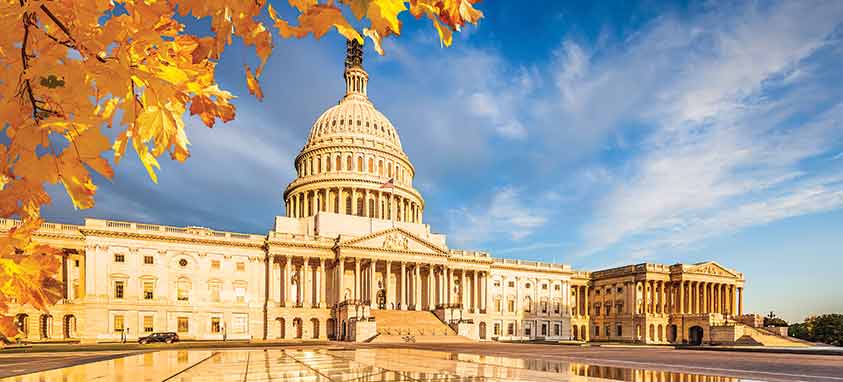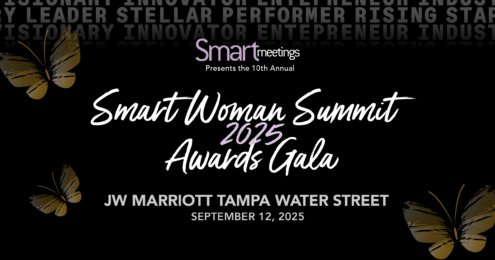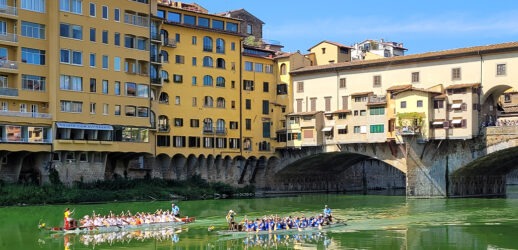New hotels, event spaces expand planners’ options
In the past 18 months, our nation’s capital has seen a flurry of progress in the quest to deliver a great experience for the meetings and conventions that come to town.
“Destination DC and the Washington, D.C., hospitality community have seen enormous success in our international MICE market,” says Melissa Riley, vice president of convention sales and services for Destination DC. “Our formal international program is now in its fifth year and we continue to see increased interest and momentum behind this segment. Recently, we won two short-term opportunities: for Nike European Operations and the World Congress of Pediatric Cardiology and Cardiac Surgery.”
New facilities have spurred the meetings boom. The 1,175-room Marriott Marquis Washington, DC debuted in May 2014 alongside Walter E. Washington Convention Center. This new hotel has 105,000 sq. ft. of event space, including a 2,500-square-foot rooftop terrace. For citywide events that use both the Marriott and the convention center, a new indoor pedestrian corridor allows for a quick walk between facilities.
What’s more, D.C.’s convention center is now targeting non-citywides. The center has rolled out a program for smaller meetings to use the building’s 77 customizable meeting rooms. This allows planners to book smaller and boutique hotels, and bring attendees to the center via motor coach or the DC Metro (at the Mt. Vernon Square/Convention Center station).
Another element that will entice planners to use the center is a new retail and restaurant complex called CityCenterDC, which opened one block away.
“This luxury, mixed-use complex has created immense buzz in the downtown area,” Riley says. “We showcase the restaurants, shops and outdoor special event space to all of our clientele.”
Lastly, major recent renovations include the 657-room Mayflower Renaissance’s $20 million redo, plus the reopening of the Watergate Hotel (after seven years) with modernized guest rooms, 17,000 sq. ft. of new meeting space and a rooftop bar.
Forty miles to the north, Baltimore—founded in 1729, 61 years before Washington, D.C.—has had a vibrant year as well. Significant new attractions came to the National Aquarium on the Inner Harbor, plus the Horseshoe Casino opened less than 2 miles from Baltimore Convention Center and the harbor.
Baltimore has been attracting a wide variety of meetings, and many of them have exceeded expectations.
“We have a strong record of meetings that have surpassed their attendance projections, including the American College of Occupational and Environmental Medicine, BNP Media’s Food Safety Summit and the American Society of Highway Engineers,” says Amy Calvert, senior vice president of convention sales and services for Visit Baltimore.
As in D.C., small and midsize meetings are a focus here. Visit Baltimore unveiled a program for such groups that offers a dozen immersive team-building and social activities that emphasize unique aspects of the city. These range from learning how the American railroads were built to understanding the science of wine, making Neapolitan pizza and learning about the life and mind of Baltimore native Edgar Allan Poe.
Recent hotel developments include a full historical restoration of the 440-room Lord Baltimore Hotel (a 1928 French Renaissance landmark) and a $5 million renovation of Baltimore Marriott Waterfront’s ground-level restaurant, lounge and great room that has integrated these spaces for more socializing.
Washington, D.C., and Baltimore also boast plenty of museums and other cultural attractions, as well as intriguing neighborhood restaurants.
Museums & Cultural Spaces for Special Events
 Bond villains exhibit at International Spy Museum, Washington, D.C.
Bond villains exhibit at International Spy Museum, Washington, D.C.
Washington, D.C.
The main player in Washington, D.C.’s museum scene is the Smithsonian Institution, comprising 19 museums and the National Zoo. Places often used for groups’ evening events are the National Air and Space Museum, National Museum of Natural History and National Museum of American History.
Other Smithsonian museums are equally impressive and equipped to handle group events. One is the National Portrait Gallery, housed in a renovated National Historic Landmark building in the bustling Penn Quarter neighborhood. NPG tells the history of America through individuals who shaped its culture: presidents, poets, visionaries, villains, actors, activists and others. An enclosed courtyard with an elegant glass canopy seats 800 for dinner, while the Great Hall seats 300 for dinner.
Another option is the National Museum of the American Indian, home to one of the largest collections of Native American art, and cultural and historical artifacts. The building itself is striking; it’s shaped and colored to resemble a huge wind-sculpted rock formation. The outside gardens showcase various landscapes in which Native Americans lived. Inside, the museum can accommodate groups as large as 600 and serve cocktails and hors d’oeuvres for a reception.
D.C. has other unique museum options as well. Standing between the U.S. Capitol and the White House on Pennsylvania Avenue and featuring dramatic vistas of Washington, Newseum features exhibit galleries with 250,000 sq. ft. of event space that can accommodate receptions of up to 3,500 people. Groups can occupy The New York Times Great Hall of News or execute a full buyout with access to all exhibits of historical events covered by news reporters.
There’s also the International Spy Museum, located across the street from the National Portrait Gallery. In addition to a private room with huge windows that accommodates 150 for dinner, the museum lets groups use the exhibit areas for larger receptions. An event can even include team-building espionage excursions where guests must discover clues and items hidden among the interactive exhibits of spy artifacts.
One facility that’s not yet a museum but is brimming with artistic history is John F. Kennedy Center for the Performing Arts. Among the nation’s most renowned performance facilities, it sits along the Potomac River and offers a large outdoor terrace for receptions. There are also 18 indoor rental spaces that accommodate 2,462 people. What’s more, groups can plan to have a reception and then attend a music or dance performance, as the center has nine different theaters.
 Blacktip reef at National Aquarium, Baltimore
Blacktip reef at National Aquarium, Baltimore
Baltimore
In Baltimore, the museum with the highest profile is Baltimore Museum of Art, home to the internationally renowned Cone Collection, which includes many of Matisse’s most significant works. Behind the granite and marble building is a lavish sculpture garden featuring fountains, two terraced gardens and 34 sculptures. Group tours are available.
Walters Art Museum in the Mount Vernon neighborhood, undergoing a $5.5 million renovation, features more than 22,000 pieces from pre-dynastic Egypt, plus Greek sculptures, Roman sarcophagi, medieval ivories, Old Master paintings, Art Nouveau jewelry, 19th-century European and American masterpieces, and 20th-century works. It can accommodate 200 for a dinner in the sculpture court.
The most prominent attraction on the Inner Harbor is the National Aquarium, with its panoramic views, five levels of exhibits and live-viewing tanks, and the ability to host events for 3,000 attendees. Another harbor-front attraction that works well for groups is the Baltimore Museum of Industry. Formerly an oyster cannery, the museum divides its galleries into machine shop, cannery, garment loft and print shop themes. Guided tours of each can take place during a reception, and seated dinners for 300 people and receptions for 500 are available within each gallery.
Just 1 mile west of the convention center is Baltimore & Ohio Railroad Museum. Along with its signature 1884 building—the huge Baldwin Roundhouse, which has a 60-foot turntable to move railcars during repairs—the museum lets guests mingle among a collection of historic locomotives and rolling stock to understand how the B&O affected the development of transportation in America. The meticulously restored wooden roundhouse accommodates 450 for dinner and 2,800 for receptions.
The family that started the B&O also provided another memorable venue: Evergreen Museum & Library, a 19th-century estate that’s a 10-minute drive from Inner Harbor. The Garrett family gave the estate to Johns Hopkins University decades ago, and today the 48-room mansion holds more than 50,000 pieces of the family’s art collection.
The mansion’s north wing can accommodate 70 for dinner and 100 for receptions. The nearby Carriage House seats 300 for dinner and the Upper Garden behind the mansion holds 400 for a tented dinner and 500 for receptions. The meadow below accommodates more than 800 people for picnics.
Neighborhoods for Memorable Dine-Arounds
Washington, D.C.
An under-recognized aspect of Washington, D.C., is its variety of neighborhoods, some of which are chock-full of interesting places to sample hearty staples alongside intriguing fare from faraway places. In the Capitol Hill district, there are many locally owned boutiques and family-run restaurants that reflect the blue-collar roots of the area, which was once the city’s largest manufacturing section. In addition to traditional regional items, Salvadoran, Indian and Greek dishes are widely found here.
Georgetown was also a working-class area, with a focus on handling goods going in and out of its river port. This neighborhood existed well before Washington, D.C., was master-planned and built out; its roots are seen in brick townhouses and century-old factory buildings, now beautifully gentrified. There are high-end, happening establishments offering French, Italian and Mediterranean tapas, plus specialty markets and old speakeasys to pop into. Dessert can take place at a renowned late-night bakery.
Baltimore
In Baltimore, several historic neighborhoods have moved back toward their period charmand are bountiful places for a dine-around. In Fells Point, cobblestone streets host quaint row houses that evoke a 19th-century working-class atmosphere, while the cuisine reflects not just the Greek and Polish influence, but also the seafaring and meat-smoking of previous generations. Federal Hill, an area with 17th-century roots still visible in its architecture, has restaurants with crab cake and wine pairings as well as locally brewed beer and Cross Street Market, which features local artisanal goods.
Mt. Vernon is known as Baltimore’s cultural center, featuring museums, monuments and dining establishments that range from upscale American, Italian and French to authentic local barbecue. In Little Italy/Jonestown, attendees get a taste of generations-old recipes from Italian, Argentine and Jewish immigrants.
Wrapping Up
 Georgetown neighborhood, Washington, D.C.
Georgetown neighborhood, Washington, D.C.
Planners have been intrigued by the development boom in Washington, D.C. and Baltimore. “Our customers, international and domestic, are intrigued by the renaissance that is underway across the capital, from the National Mall to eclectic neighborhoods,” says Riley of Destination DC.
Individually, the cities offer many attractive choices for meeting groups. Since they’re only 40 miles apart, they also offer groups the opportunity to enjoy the offerings of both cities during each visit.
Major Meeting Venues
Baltimore
Two blocks from Inner Harbor; connected via indoor walkway to the Hilton; 300,000 sq. ft. of contiguous exhibition space; 85,000 sq. ft. of meeting space across 50 rooms; 27,000-square-foot outdoor terrace.
AAA Four Diamond property next to Camden Yards sports complex; connects to convention center via enclosed walkway; 750 guest rooms; 60,000 sq. ft. of meeting space.
On east side of Inner Harbor; adjacent to Fells Point neighborhood; 750 guest rooms; 80,000 sq. ft. of meeting space.
Located on Inner Harbor; 256 guest rooms; 20,600 sq. ft. of meeting space; 10,200-square-foot spa; fourth-floor outdoor pool with adjacent bar and grill.
Wyndham Grand property just north of Baltimore; in early summer 2015 completed renovation that included 392 guest rooms and meeting areas; 30,000 sq. ft. of meeting space.
Connected to convention center via skywalk; 10-minute walk to National Aquarium; 488 guest rooms; 40,000 sq. ft. of meeting space; additional 5,000 sq. ft. of outdoor function space.
1928 French Renaissance landmark; four blocks to convention center; 440 guest rooms; 30,000 sq. ft. of meeting space; restoration of property recently done by crafts workers and artisans.
Renaissance Baltimore Harborplace Hotel
AAA Four Diamond property overlooking Inner Harbor; three blocks to convention center; 622 guest rooms; 31,000 sq. ft. of meeting space; Watertable Lounge serves farm-to-table fare.
Next to convention center; 337 guest rooms; 20,000 sq. ft. of meeting space includes 7,500-square-foot ballroom and 16 breakouts; popular Morton’s steakhouse and informal bar and grill.
Washington, D.C.
Bethesda North Marriott & Conference Center
Seven miles northwest of city center, next to White Flint Metro Station; 447 guest rooms; two restaurants; fitness center; indoor heated pool; 49,314 sq. ft. of high-tech meeting space; ballroom; amphitheater.
Fairmont Washington, D.C., Georgetown
Near White House and Kennedy Center for the Performing Arts; 415 guest rooms; 29,000 sq. ft. of meeting space; courtyard garden; indoor pool; fitness center; Juniper Restaurant features local, sustainable ingredients.
In Penn Quarter, four blocks to convention center, Verizon Center and National Museum of American Art; 888 guest rooms; 42,000 sq. ft. of meeting space; indoor pool.
Hyatt Regency Washington Capitol Hill
Located four blocks from Union Station and U.S. Capitol; 836 guest rooms; 38,000 sq. ft. of meeting space; indoor pool; double-decker bus tours and Old Town Alexandria trolleys leave directly from property.
Mandarin Oriental Washington D.C.
Near Jefferson Memorial and several Smithsonian Museums; 400 guest rooms; 38,000 sq. ft. of meeting space; AAA Five Diamond restaurant; 10,000-square-foot spa.
Marriott Marquis Washington DC
Opened April 2014 adjacent to convention center and one block to CityCenter district; 1,175 guest rooms; 105,000 sq. ft. of meeting space includes 30,000-square-foot ballroom; health club.
AAA Four Diamond property on 11 acres in Rock Creek Park next to National Zoo; 832 guest rooms; 100,000 sq. ft. of meeting space; outdoor heated pool; outdoor gardens.
Renaissance Washington, DC Downtown Hotel
Across from convention center; short walk to Verizon Center, National Mall and Chinatown; 807 guest rooms; 64,000 sq. ft. of meeting space; fine-dining restaurant, sports bar/grill and lounge.
Ronald Reagan Building and International Trade Center
On Pennsylvania Avenue in the heart of the city; walking distance to Smithsonian museums, Capitol Building; 65,000 sq. ft. of meeting space, including 15 rooms; 635-seat amphitheater.
Located less than a 20-minute drive from downtown, in an urban and residential setting; 449 guest rooms; Brix and Ale restaurant; indoor heated pool; fitness center; 45,000 sq. ft. of indoor meeting space, including 10,752-square-foot Fairfax Ballroom.
The National Conference Center
Multipurpose venue in Leesburg, Virginia, 35 miles northwest of Washington, D.C.; 917 guest rooms; fitness options; 250,000 sq. ft. of meeting space; 250 meeting rooms; 800-seat dining room.
Walter E. Washington Convention Center
Connected via large indoor walkway to Marriott Marquis; one block from new CityCenterDC shopping/entertainment district; 703,000 sq. ft. of exhibit space plus 198,000 sq. ft. across 77 breakout rooms; $4 million art collection.
Borders Adams Morgan and Dupont Circle neighborhoods, near National Zoo; 1,070 guest rooms; 110,000 sq. ft. of meeting space; formal restaurant, sports grill and coffee shop.
Washington Marriott Wardman Park
Next to National Zoo and near Embassy Row; 1,300 guest rooms; 195,000 sq. ft. of meeting space; Metro station on site; steak/seafood restaurant plus English pub and coffeehouse.
Resources
-Events DC – eventsdc.com
-Visit Baltimore – baltimore.org/meetings
-Destination DC – washington.org







